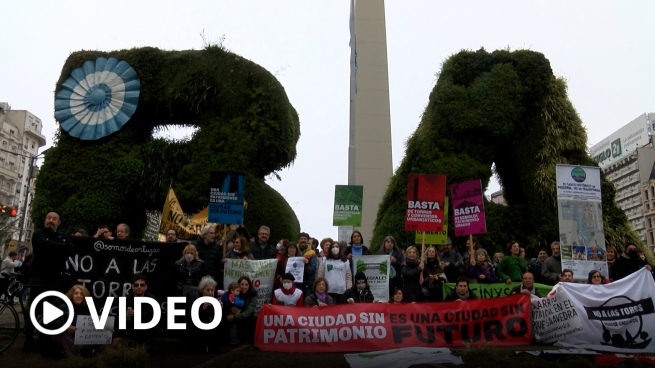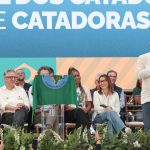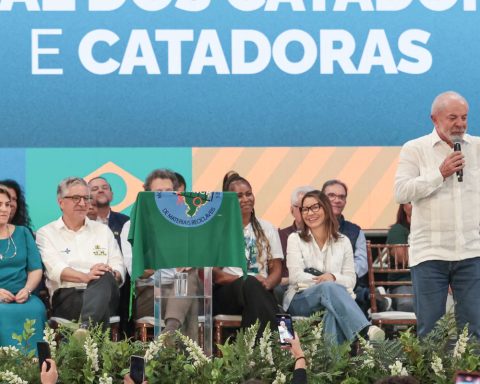“More green and less cement, no to the new urban and building codes”, “Stop destroying our neighborhood” and “Vecinxs de CABA united for greener, enough real estate violence”, read the posters that the mobilized neighbors raised towards Avenida 9 de Julio and Corrientes, coinciding with Independence Day.
The call was made by the Observatory of the Right to the City through social networks, together with organizations from different Buenos Aires neighborhoods, such as San Telmo, Palermo, Núñez, Barracas, Villa Ortúzar, Colegiales, Belgrano and Saavedra.
“We are neighborhood organizations that want greener, better quality of life for each of the neighbors. That is why we are fighting and for effective citizen participation that if the participatory budget is not opened, it will never be possible to achieve,” he told Télam José Olivo, 60, and member of the organization Vecinos Por Saavedra.
For his part, the architect Daniel Ángel Giglio explained that they reject the construction of buildings on the railway yard located in Federico Lacroze and Moldes, in the Colegiales neighborhood, and ask that it be used as a park. “They have already installed three buildings for us in the middle,” Giglio complained.
“We are fighting to remove the buildings that were built in 2018 in the middle of the beach,” he said, specifying that of the nine lots that make up the area, “four have a judicial protection that prevented them from continuing with the works.”

Giglio also pointed out the Urban Code approved in 2018 “which is taking over all the low-rise neighborhoods of Colegiales by allowing indiscriminate construction” and criticized the fact that towers are allowed to be built on Costanera norte “without taking into account that they are covering up our view of the river, that they are privatizing it”.
As a third point, he rejected the construction of private buildings in Costa Salguero and the agreement with the IRSA group to build a new neighborhood in the former Boca Sports City, two projects that were approved in December last year by a majority of the ruling party of Together. for the change.
The former deputy and legislator María José Lubertino explained, for her part, that the Network of Neighborhood Organizations “is articulating the struggles that were previously dispersed and residents of each neighborhood are understanding that the problems are common, they are not resolved with specific issues.” .

“This process of urban extractivism that is taking place in the City of Buenos Aires is something structural,” he denounced.
In turn, he listed “the common axes, which are to vindicate participatory democracy, recover decentralization in communes and demand the recovery of railway yards to build the great system of green and public parks.”
“In addition, the recovery of the Costanera as a 100% green and public space and a new modification of the Urban Code to subject it to the environmental urban plan,” he added.
In turn, Lubertino recalled that the World Health Organization (WHO) recommends 10 square meters per inhabitant, but according to City statistics there are currently 6 m2 per inhabitant, and according to a survey of neighbors there are only 5 and there will be 3 m2 if the reform of the current Urban Code is carried out.


















